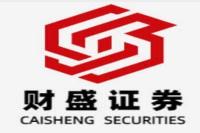Tesla's Optimus: A Giant Leap for Humanoid Robots? (Meta Description: Tesla Optimus robot, humanoid robot, AI, robotics, Tesla AI, bipedal robot, autonomous navigation, machine learning)
Hold onto your hats, folks! We're about to dive deep into the fascinating world of Tesla's Optimus, a humanoid robot that's rapidly evolving from a sci-fi dream to a tangible reality. Forget those clunky, slow-moving robots of yesteryear – Optimus is a game-changer, and its recent advancements have sent shockwaves through the robotics industry. This isn't just another press release; it's a testament to years of relentless innovation, a glimpse into a future where robots seamlessly integrate into our daily lives, and a story brimming with both breathtaking progress and intriguing challenges. We'll unpack the latest developments, analyze the technology behind this marvel of engineering, and explore the potential implications – both positive and negative – of this groundbreaking achievement. Prepare to be amazed, intrigued, and perhaps a little bit awestruck by the sheer audacity and ambition of Tesla's endeavor. From its near-misses on uneven terrain to its impressive learning curve, we’ll unpack the nuances of Optimus’s journey, exploring the cutting-edge AI, the intricate mechanics, and the visionary leadership that’s driving this incredible project forward. This isn’t just another tech story; it’s a narrative about human ingenuity, pushing the boundaries of what’s possible, and the potential reshaping of our future. So buckle up, because we're about to embark on a journey into the heart of the robot revolution!
Tesla Optimus: Navigating the Uneven Terrain of Robotics
Tesla's Optimus humanoid robot has recently showcased remarkable progress in traversing complex terrain. Videos released by Tesla showcase Optimus navigating uneven ground covered in grass and leaves, even managing inclines of up to 30 degrees. While not perfectly graceful (yet!), Optimus’s ability to maintain balance and avoid falls is a significant achievement. This isn't just about mimicking human movement; it's about developing robust algorithms that allow the robot to adapt to unpredictable surfaces, a crucial step toward building truly practical and versatile robots. The initial stumbles and near-falls, far from being setbacks, highlight the iterative nature of robotics development, showcasing the robot's inherent learning capabilities and adaptive responses. It's a powerful demonstration of the power of AI and machine learning in action!
Optimus's Amazing Balancing Act: A Deep Dive into the Technology
What makes Optimus's progress so noteworthy? It's a confluence of several cutting-edge technologies working in concert. Tesla leverages its expertise in Autopilot, specifically its vision, navigation, and AI algorithms, adapting them to the unique challenges of bipedal locomotion. The "end-to-end" neural network employed by Tesla is key here. This means that the entire process, from image acquisition through to motor control, is handled by neural networks, enabling a level of seamless integration and adaptability that's unprecedented. Think of it as a sophisticated self-learning system. The more data Optimus collects, the better it gets at navigating its environment. This is where the "learning from mistakes" aspect comes into play, with each near-fall providing valuable feedback that refines the robot's algorithms.
Optimus's ability to navigate without relying on a visual system is particularly impressive, highlighting the sophistication of its proprioceptive sensors and balance algorithms. This suggests a future where robots can operate effectively even in environments with limited visibility. The current lack of visual input also underscores Tesla's phased approach, prioritizing the development of core locomotion and balance capabilities before integrating more complex sensory inputs. This approach is strategically sound, focusing on building a solid foundation for future advancements. It's a bit like learning to walk before you run – a crucial step in the overall development process.
Navigating the Future: Optimus's Planned Upgrades and Potential Applications
Tesla has outlined several key upgrades for Optimus, including:
- Enhanced Visual Capabilities: Integrating a sophisticated vision system to provide better environmental awareness and proactive path planning. This will allow Optimus to anticipate obstacles and adjust its movements accordingly, making its movements smoother and more efficient.
- Improved Gait and Responsiveness: Refining Optimus's walking style to appear more natural and improving its responsiveness to commands. This will not only enhance its efficiency but also contribute to a more human-like interaction.
- Enhanced Fall Recovery: Developing algorithms that allow Optimus to gracefully recover from falls, minimizing damage and ensuring continued functionality. This is a critical step in ensuring the robot's robustness and reliability in real-world scenarios.
These upgrades are not simply cosmetic; they are crucial steps towards achieving Optimus's full potential. The potential uses for a humanoid robot with such capabilities are vast, ranging from manufacturing and logistics to healthcare and even companionship. Imagine Optimus assisting elderly individuals with daily tasks, working alongside humans in factories, or even performing complex surgeries under the guidance of skilled medical professionals. The possibilities are truly endless.
The Tesla Effect: Disrupting the Robotics Industry
Tesla's approach to robotics is significantly different from traditional approaches. The company's focus on AI, machine learning, and a large-scale, iterative development process is setting a new standard for the industry. Unlike many robotics companies focusing on niche applications, Tesla aims to create a general-purpose humanoid robot capable of performing a wide range of tasks. This ambitious goal, while challenging, has the potential to revolutionize multiple industries, ushering in a new era of automation and efficiency. It's a bold move, and its success could reshape the landscape of robotics and automation for decades to come.
Furthermore, Tesla's integration of existing technologies, like its Autopilot system, demonstrates a cost-effective and efficient approach to robotics development. This lean strategy, leveraging existing infrastructure and expertise, allows Tesla to accelerate progress and potentially bring humanoid robots to market faster and at a lower cost than traditional methods. This is a powerful example of how cross-industry innovation can lead to breakthroughs.
Tesla's Vision: Optimus in the Real World
Tesla's ambitious timeline for Optimus includes small-scale production by late 2024 and mass production in 2025. The initial focus will be on internal use within Tesla's factories, allowing the robots to be trained and refined in a controlled environment. This phased approach is smart, allowing Tesla to gather valuable real-world data and refine Optimus's capabilities before wider deployment. Subsequently, Tesla aims to sell Optimus to external customers, potentially reaching thousands to tens of thousands of units annually. This bold prediction underlines Tesla’s vision of transforming industries with its humanoid robot.
The potential impact on various sectors is immense. Optimus could revolutionize manufacturing, logistics, healthcare, and even domestic services, offering a cost-effective and efficient solution to a wide range of challenges. However, the ethical considerations surrounding widespread adoption of such technology cannot be ignored. Issues such as job displacement, safety regulations, and potential misuse of such advanced technology need careful consideration and proactive mitigation strategies.
Frequently Asked Questions (FAQs)
Q1: How does Optimus's walking compare to a human's?
A1: While significantly improved, Optimus's gait is still not as fluid or natural as a human's. However, its ability to maintain balance and traverse uneven terrain is a major accomplishment.
Q2: What kind of sensors does Optimus use?
A2: Currently, Optimus's navigation relies heavily on proprioceptive sensors, providing information about its body's position and movement. Visual sensors are planned for future iterations.
Q3: What is the role of AI in Optimus?
A3: AI is fundamental to Optimus's functionality. From motor control to environmental perception and decision-making, AI algorithms are at the heart of its operation. Tesla uses a unique "end-to-end" neural network approach, integrating all aspects of the system into a unified AI architecture.
Q4: When can I buy an Optimus robot?
A4: Tesla aims to begin selling Optimus to external customers in 2025. However, availability and pricing will likely depend on several factors, including production capacity and market demand.
Q5: What are the potential ethical concerns surrounding Optimus?
A5: The widespread use of humanoid robots raises several ethical concerns, including job displacement, potential misuse, and the need for clear safety regulations. These issues require careful consideration and proactive mitigation strategies.
Q6: How does Optimus's development differ from other humanoid robots?
A6: Tesla's approach leverages its expertise in AI and Autopilot, allowing for rapid iteration and integration of existing technologies. This approach potentially leads to faster development and lower costs compared to traditional methods.
Conclusion: A Robot Revolution is on the Horizon
Tesla's Optimus represents a remarkable leap forward in humanoid robotics. While still in its early stages, Optimus's recent advancements in navigation and balance demonstrate the immense potential of this technology. Although challenges remain, Tesla's ambitious timeline and innovative approach suggest a future where humanoid robots play a significant role in various aspects of our lives. The journey ahead is filled with exciting possibilities, but thoughtful consideration of ethical implications is crucial to ensure the responsible development and deployment of this transformative technology. The robot revolution is not merely coming; it's already here, and Optimus is leading the charge!



